Subscribe to our ▶️ YouTube channel 🔴 for the latest videos, updates, and tips.
Months of the Year
There are 12 months in a year. The months are January, February, March, April, May, June, July, August, September, October, November and December. We use a calendar to know the dates and months of a particular year.
The year begins with the January month. So, January is the 1st or first month of the year.
February is the 2nd or second month of the year.
March is the 3rd or third month of the year.
April is the 4th or fourth month of the year.
May is the 5th or fifth month of the year.
June is the 6th or sixth month of the year.
July is the 7th or seventh month of the year.
August is the 8th or eighth month of the year.
September is the 9th or ninth month of the year.
October is the 10th or tenth month of the year.
November is the 11th or eleventh month of the year.
December is the last month i.e., 12th or twelfth of the year.
A year has
365 days.
A leap year comes once in 4 years. It has 366 days. It has one more day in the month of February.
2004, 2008, 2012, 2016, 2020, 2024 were leap year.
A calendar shows the days, weeks and months of the year.
It is clear from the above calendar that:
★ 3rd is a Sunday
★ 4th is a Monday
★ 5th is a Tuesday
★ 6th is a Wednesday
★ 21st is a Thursday
★ 15th is a Friday
★ A day repeats itself after every 7 days.
The names of the months in order with number of days are given below in the table.
From the above table, we see that:
l January, March, May, July, August, October and December have 31 days.
l April, June, September and November have 30 days.
l February has 28 or 29 days.
February has 28 days. Once in four years, February has 29 days. The year in which February has 29 days is called a leap year.
The year which has 29 days in. February is called a leap year.
There is an easy way to remember the days of each month.
Starting with January, go up and down on your knuckles as shown above. All the months that come up on a knuckle have 31 days each. All the months that come up on depressions have 30 days each except February that has 28 or 29 days.
What is a leap year?
A leap year comes once in 4 years. It has one day extra, that is, in a leap year, there are 366 days. This extra day is adjusted in the month of February.
In a common year,
the total number of days = 365 and
number of days in the month of February = 28
In a leap year,
the total number of days = 366 and
the number of days in the month of February = 29
2024 is a leap year.
Worksheet on Months of the Year:
1. Look at the calendar for the current year and fill in the details.
|
Months having 30 days |
Months having 31 days |
Months having 28/29 days |
|
_______________ |
_______________ |
_______________ |
Answer:
Months having 30 days: April, June, September, and November.
Months having 31 days: January, March, May, July, August, October, and December.
Months having 28/29 days: February
2. Fill in the blanks:
(i) __________ is the 1st month of a year.
(ii) March comes just after __________.
(iii) __________ comes just before July.
(iv) __________ comes in between April and June.
(v) January comes just before __________.
(vi) There are __________ days in the month of August.
(vii) __________ is the 7th month of the year.
(viii) April comes just after __________.
(ix) __________ is the last month of the year.
(x) __________ comes in between May and July.
Answer:
2. (i) January
(ii) February
(iii) June
(iv) May
(v) February
(vi) 31
(vii) July
(viii) March
(ix) December
(x) June
3. Answer the following questions:
(i) How many months are there in a year?
(ii) Which month has least number of days?
(iii) Which month comes just after July?
(iv) How many months have 31 days each?
(v) Which is the 4th month of the year?
(vi) Which month comes in between September and November?
Answer:
3. (i) 12
(ii) February
(iii) August
(iv) 7
(v) April
(vi) October
Calendar
Observe the months in the calendar shown below.
A month could either have 30 or 31 days except February that has 28 days (or 29 in case of a leap year).
4. Look at the calendar of 2024 and fill in the blanks.
(i) There are __________ days in February.
(ii) There are __________ days in April.
(iii) There are __________ days in July.
(iv) There are __________ Sundays in January.
(v) There are __________ Mondays in January.
(vi) There are __________ Tuesdays in March.
(vii) 7th March falls on __________.
(viii) 15th August falls on __________.
(ix) 2nd October falls on __________.
(x) 25th December falls on __________.
(xi) The month of April ends on a __________.
(xii) The month of August ends on a __________.
(xiii) The month of March begins on a __________.
(iv) The month of November begins on a __________.
Answer:
4. (i) 29
(ii) 30
(iii) 31
(iv) 4
(v) 5
(vi) 4
(vii) Thursday
(viii) Thursday
(ix) Wednesday
(x) Wednesday
(xi) Tuesday
(xii) Saturday
(xiii) Friday
(xiv) Friday
Note:
You can see in the calendar that each month has 4 complete weeks in it.
Is there a possibility for any month to have less than 4 weeks?
No. Think and discuss with your partner.
REMEMBER:
1 year = 365 days
(366 days in a leap year)
= 52 weeks
= 12 months
5. Look at the calendar of 2024 and answer the following questions.
(i) Is 2024 a leap year?
(ii) Which day is the first day of the year 2024 ?
(iii) Which day is the last day of the year 2024?
(iv) Are there more Tuesdays or Wednesdays in August 2024?
(v) What is the maximum number of times a Sunday can occur in a month?
(vi) What is the date on the first Sunday of August?
(vii) What is the date on the last Sunday of October ?
Answer:
5. (i) Yes
(ii) Monday
(iii) Tuesday
(iv) No both are same.
(v) 5
(vi) 4th
(vii) 27th
6. Fill in the grid below for the current month.
(You can take help from the calendar of the current year.)
Year: __________ Month: __________
(i) Colour the days when you did not go to school in red.
(ii) How many days are there in the month?
(iii) How many weeks are there in the month?
(iv) How many Sundays are there in the month?
(v) Which days are appearing 5 times in the month?
REMEMBER:
February is the shortest moth. It has 28 days. February has 29 days in every fourth year. Every fourth year is known as leap year.
7. Write the month:
(i) Third month of the year is __________.
(ii) Last month of the year is __________.
(iii) My birthday is in the month of __________.
(iv) Our Independence Day is in the month of __________.
(v) Fourth month of the year is __________.
(vi) This month is __________.
Answer:
7. (i) March
(ii) December
(iii)
(iv) August (INDIA)
(v) April
(vi)
8. Write the dates for the following days. Take help from your teacher or parents if you have difficulty.
(i) Christmas is on __________
(ii) Gandhi Jayanti is on __________
(iii) Independence Day is on __________
(iv) Republic Day is on __________
(v) Teacher's Day is on __________
(vi) Children's Day is on __________
(vii) World Earth Day is on __________
(viii) New Year's Day is on __________
(ix) Your birthday is on __________
(x) Mother's Day is on __________
Answer:
8. (i) 25th December
(ii) 2nd October
(iii) 15th August
(iv) 26th January
(v) 5th September
(vi) 14th November
(vii) 22nd April
(viii) 1st January
(ix)
(x) Second Sunday of May each year
FUN TIME on Months of the Year
Objective: To reinforce the sequence of months in a year.
Materials Required: Tape, cards with the names of the months.
Preparation: Use the tape and stick the cards on the floor in a large circular shape as shown below.
Steps:
I. One student at a time takes his position inside the circle at the current month.
II. He then walks around the circle clockwise calling out the names of the months he passes.
III. He stops at his 'birthday month' and counts how many months to his birthday from the current month.
Record the Activity:
This is the month of __________.
My birthday is in __________.
There are __________ months to my birthday.
Note: The activity can be extended to answering questions based on seasons, festivals, family birthdays, etc.
2nd Grade Math Practice
From Months of the Year to HOME PAGE
Didn't find what you were looking for? Or want to know more information about Math Only Math. Use this Google Search to find what you need.
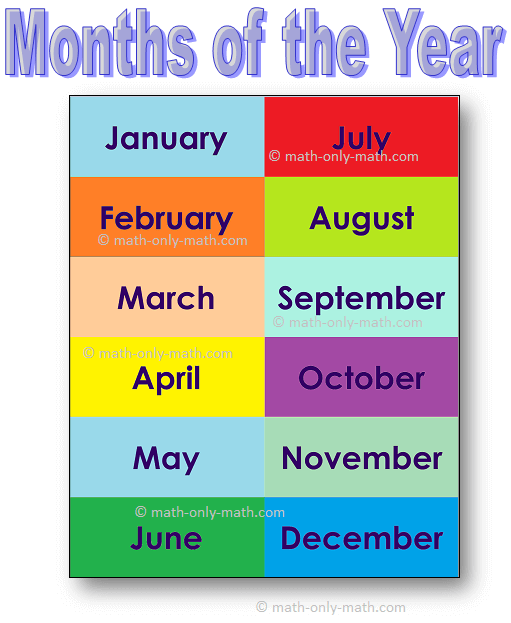
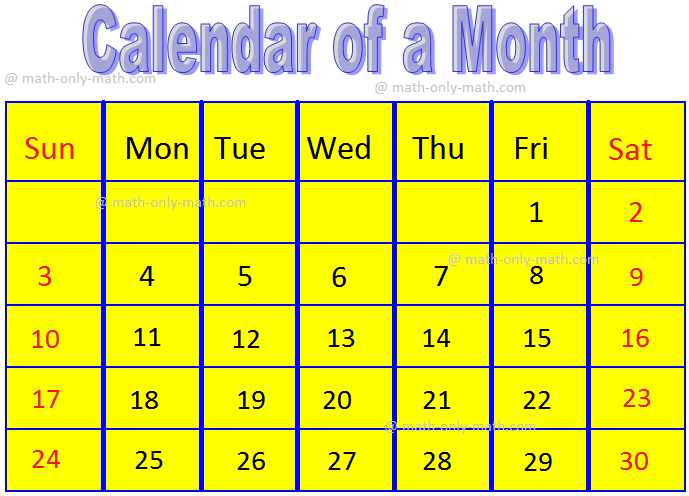
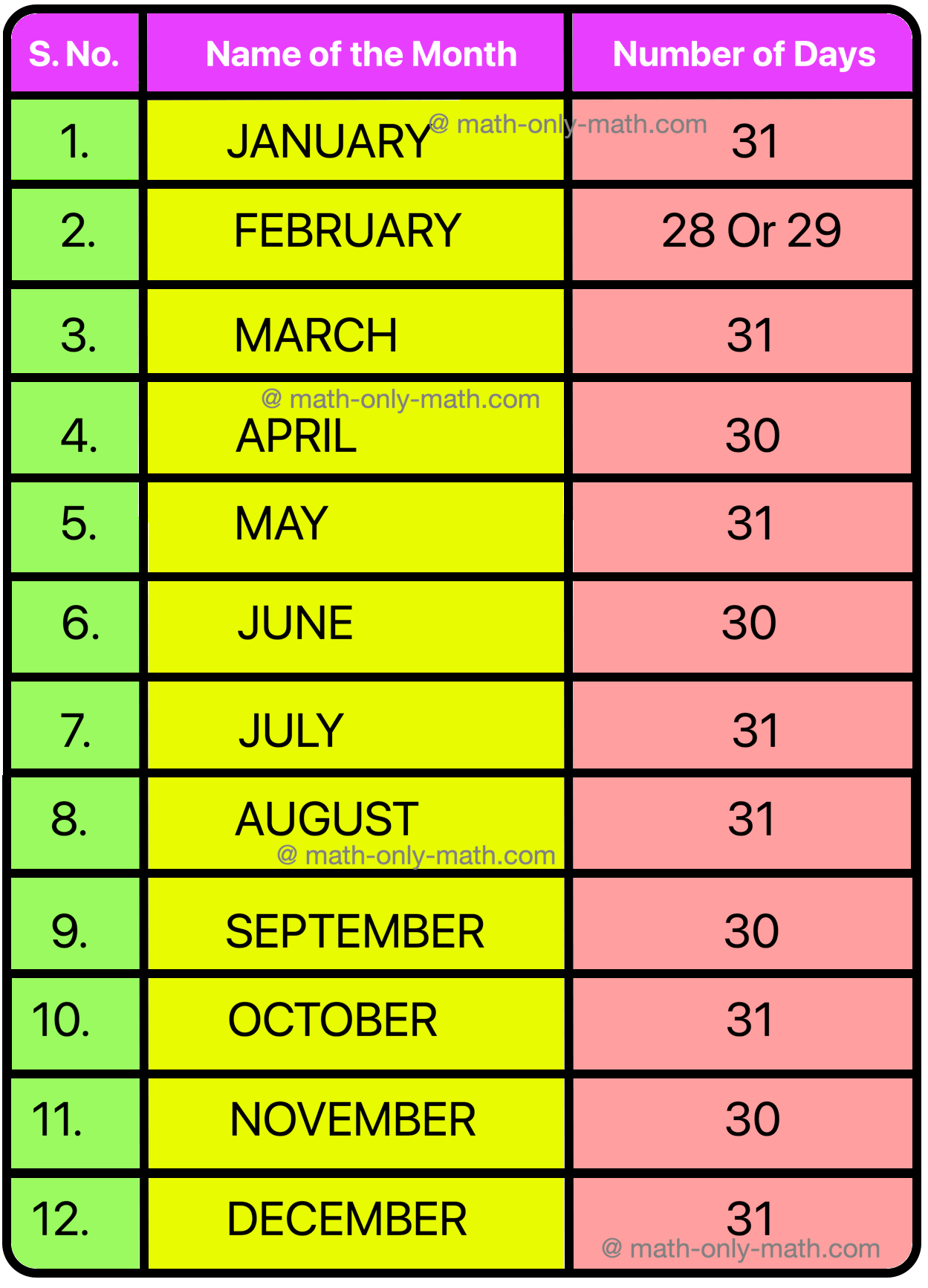
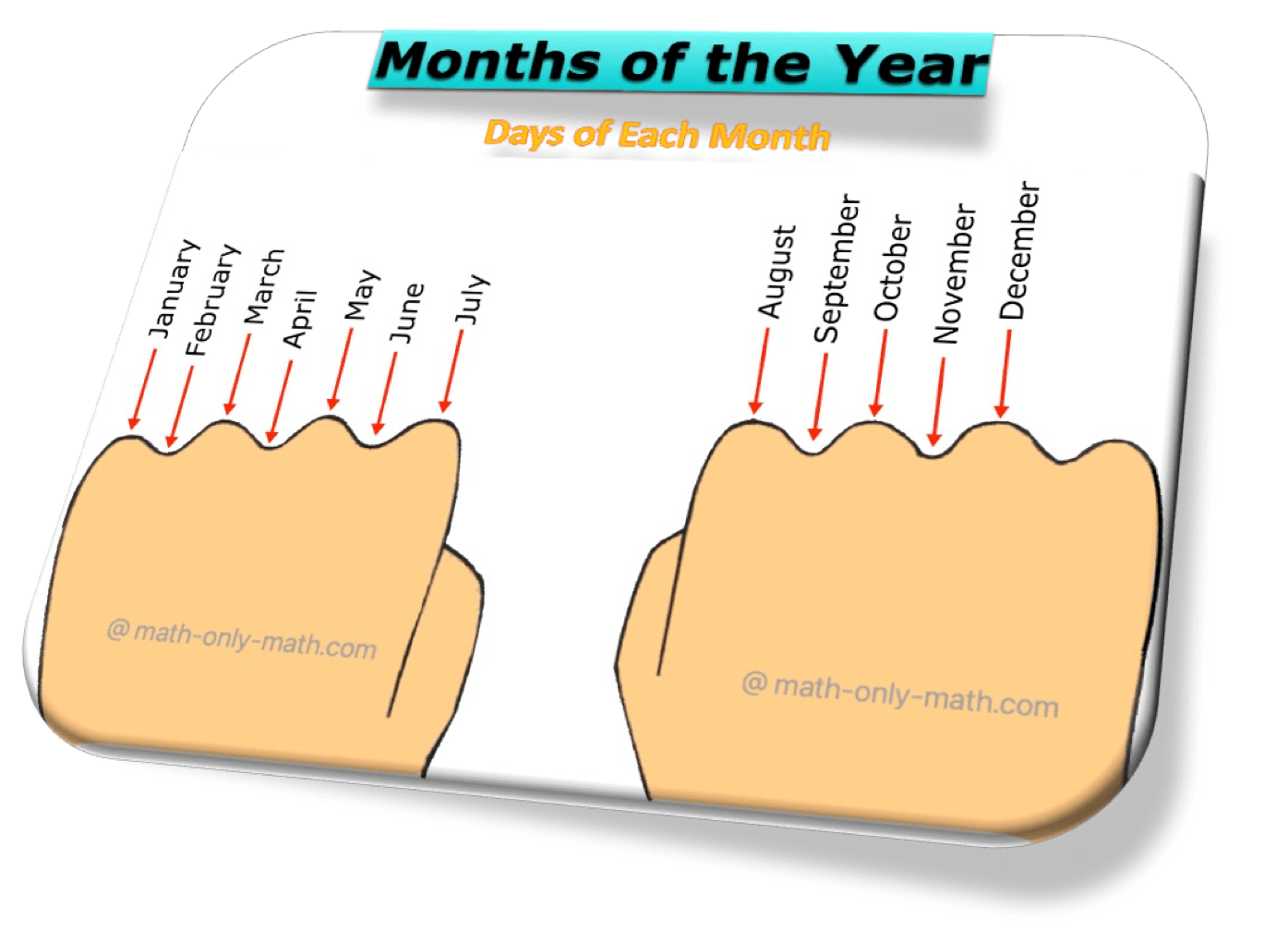
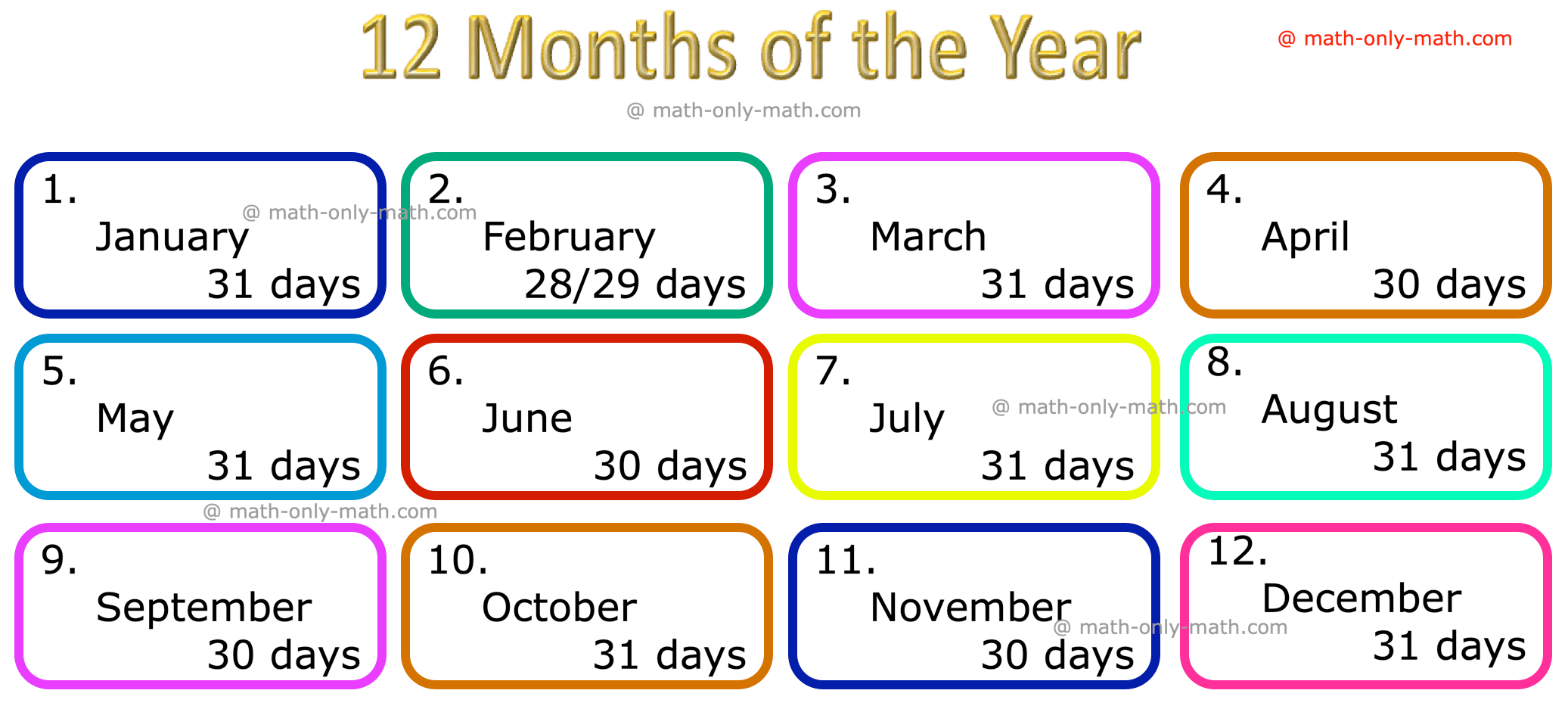
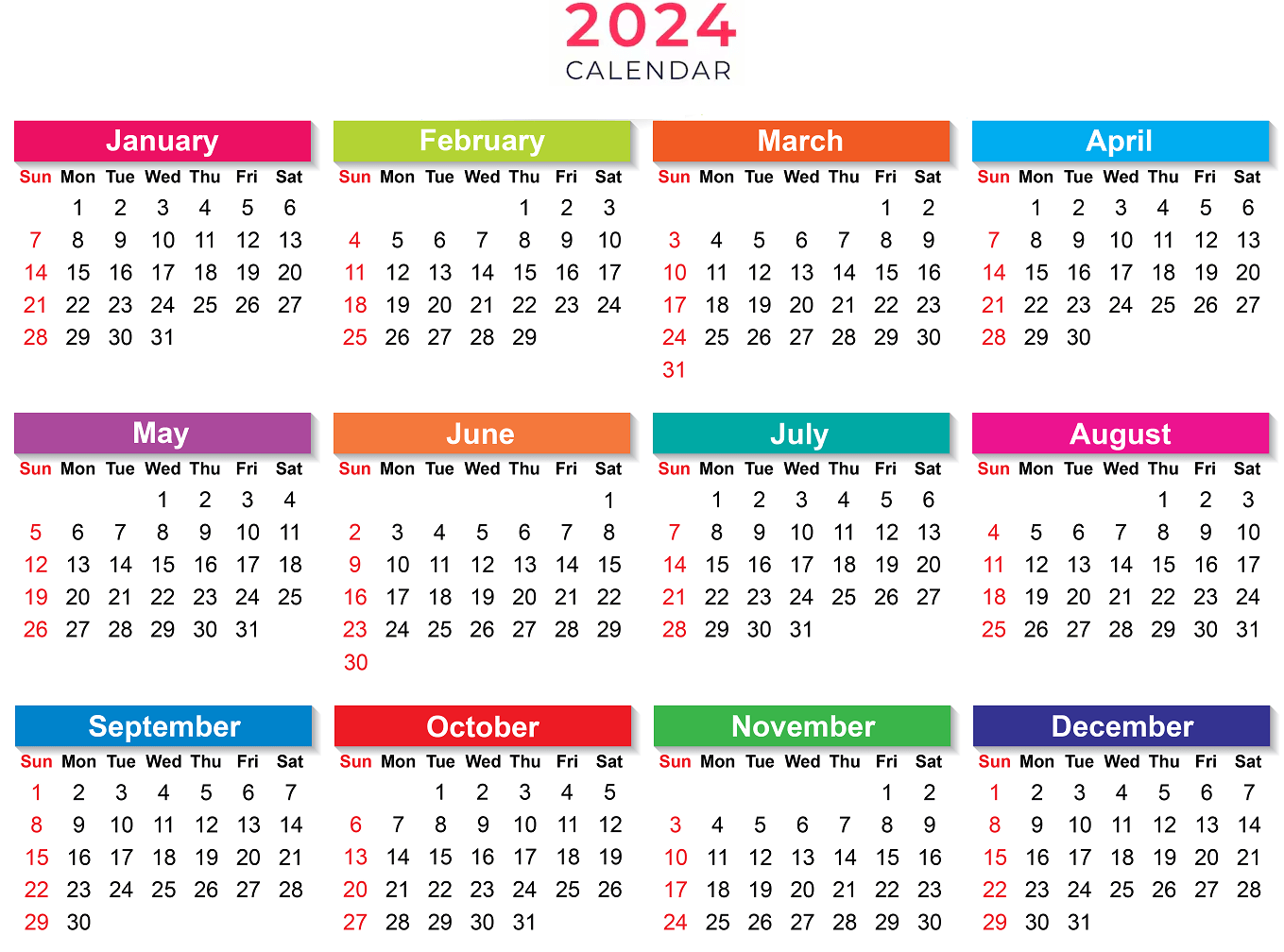
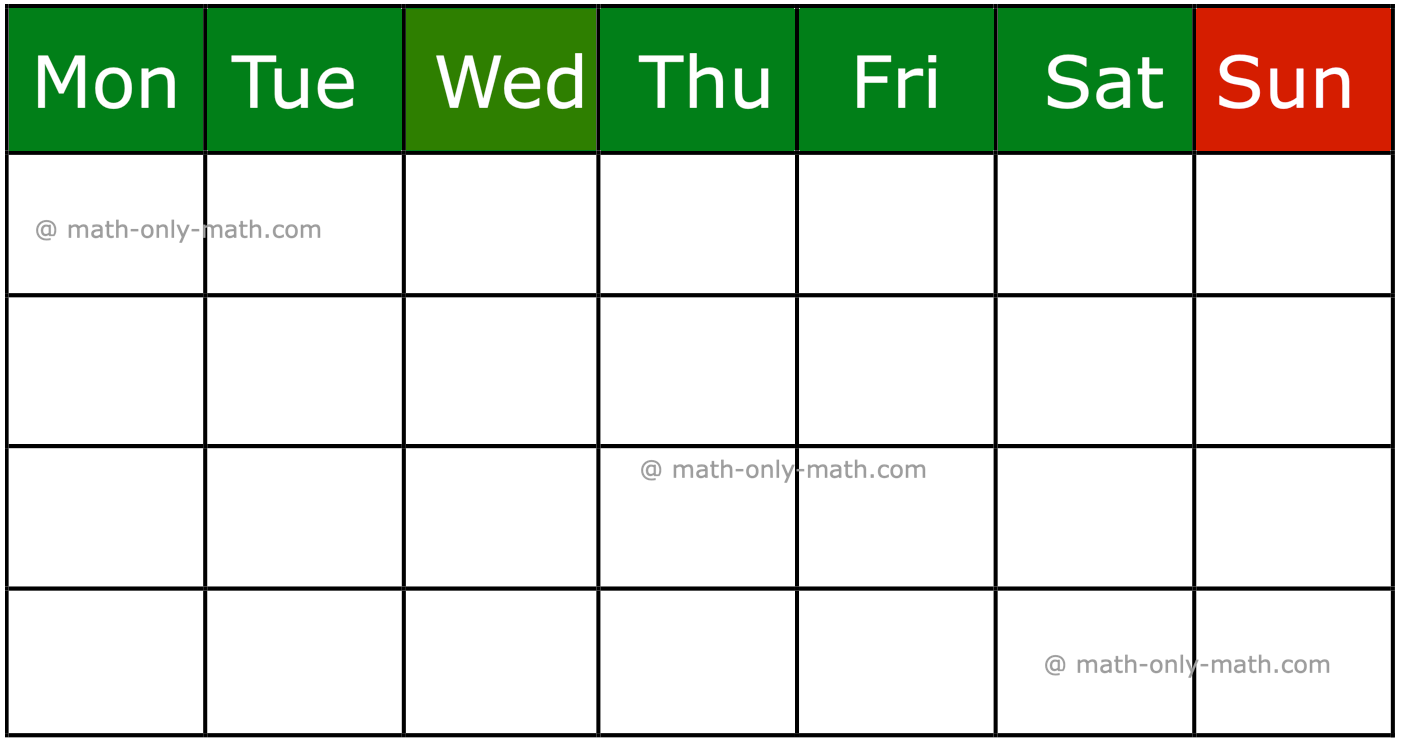
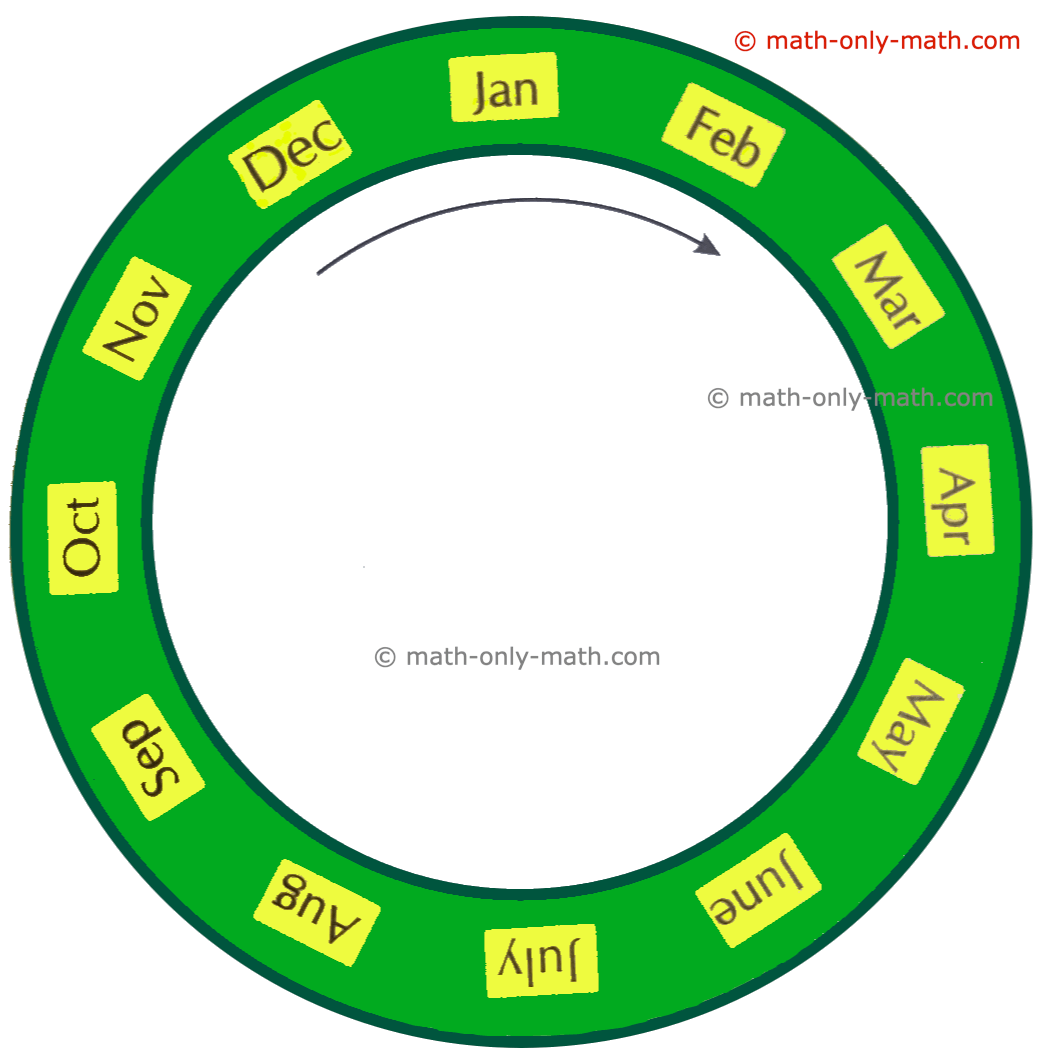


New! Comments
Have your say about what you just read! Leave me a comment in the box below. Ask a Question or Answer a Question.